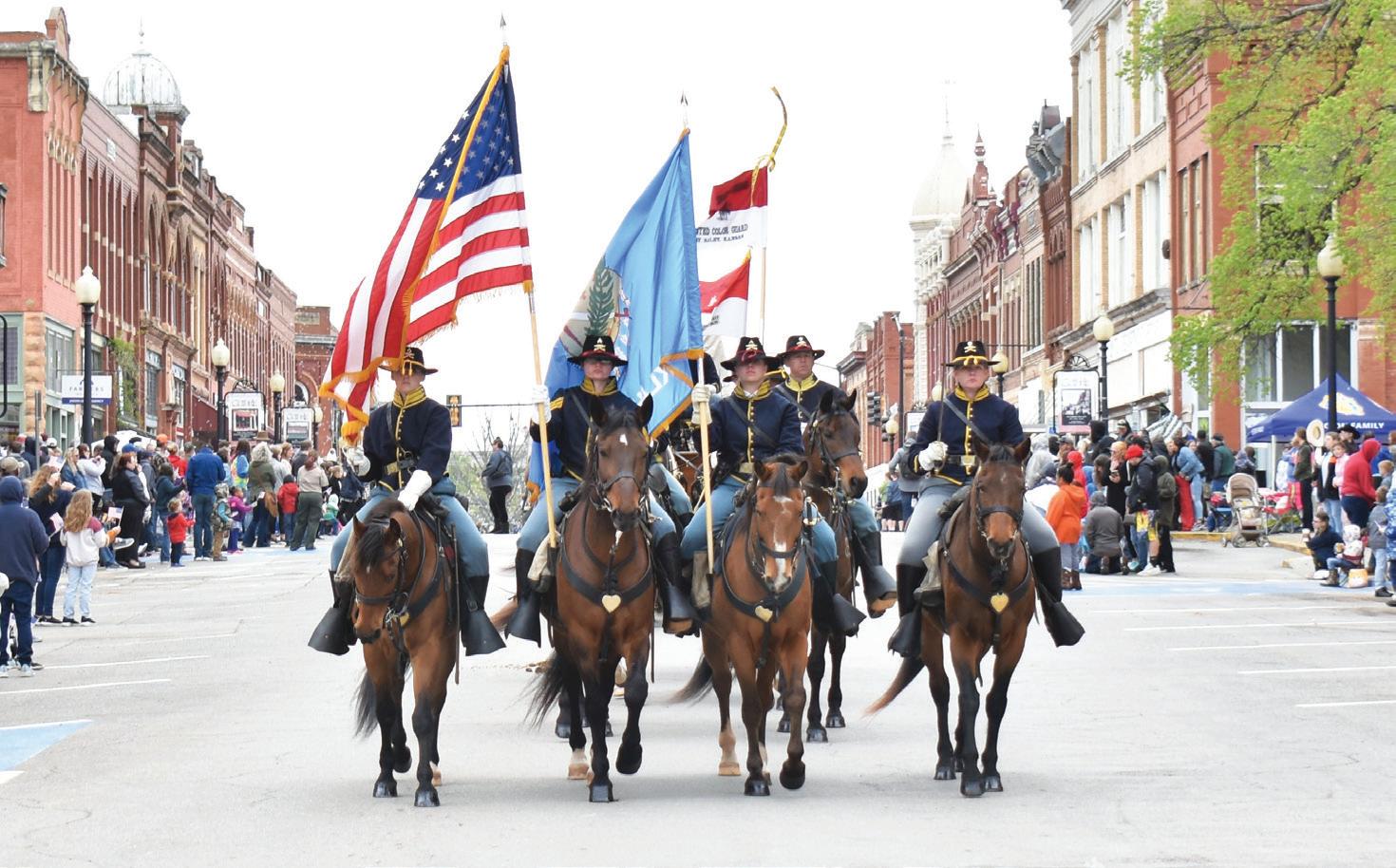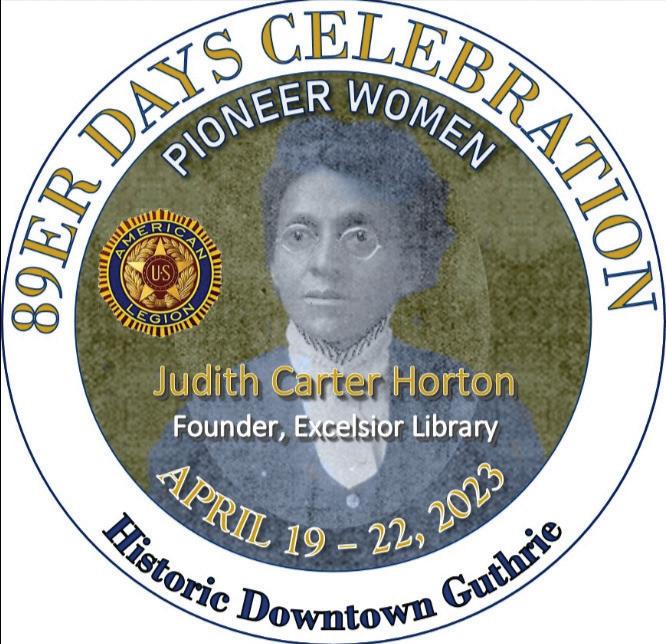


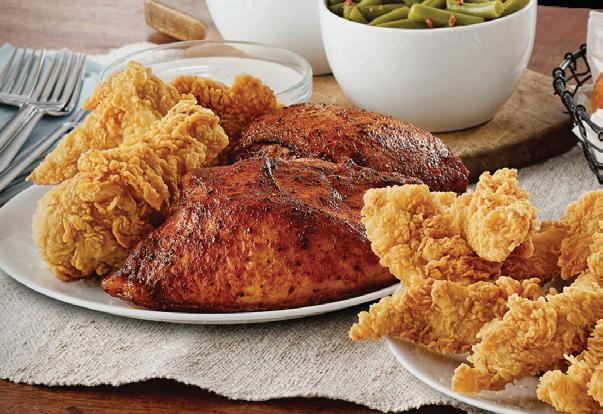
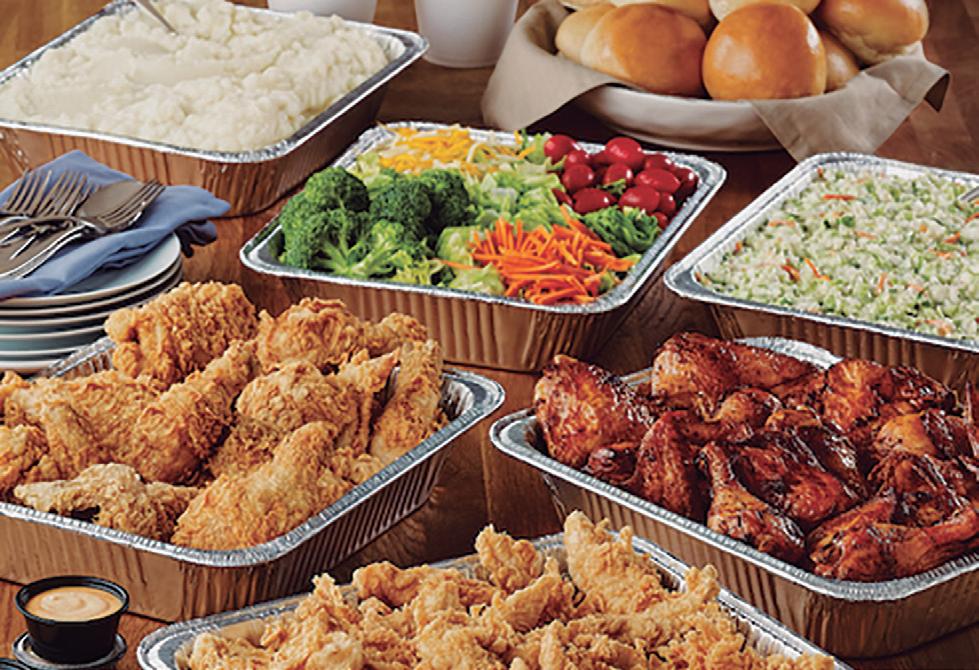








The Land Run of April 22, 1889 and Guthrie are synonymous because it was on that day that a quiet little railroad refueling station quickly turned into a bustling “tent city” with a grand influx of pioneer settlers seeking to claim some piece of the “Unassigned Land”. Spurred by the location of the land office and the availability of the railroad line, the transformation continued and within months Guthrie was the site of 15 hotels, 40 restaurants, and 6 banks. In a year or two Guthrie boasted 8 newspapers, 19 churches and 22 lumber yards. Influenced by Flemish immigrant architect Joseph Foucart, much of the new construction in


downtown Guthrie, as well as residential building throughout the Guthrie landscape, was built in the beautiful Victorian style. With this significant growth and development it was no wonder that Guthrie became known as the “Queen of the Prairie” and in 1890 was crowned as the Territorial Capital and, with statehood in

November 1907, became the first state Capital of Oklahoma.
Guthrie today has been able, through visionary planning and significant civic energy and effort, to maintain much of that wonderful history of the pioneer days and especially the fantastic Victorian architecture that was predominate at the time. Guthrie clearly remains the “Queen of the Prairie” with over 2,000 buildings on the National Historical Register. Our downtown historical district maintains the “post card perfect picture” and our numerous museums and significant building structures continue to tell the story of our rich and prosperous

During this “89er Celebration it would be a great opportunity to explore some of the treasures that await you around seemingly every corner of our community. One might want to venture into the Guthrie Museum Complex on Oklahoma Ave. which contains the oldest existing Carnegie Library in the state attached to the wonderful Oklahoma Territorial Museum. Wander through the stunning exhibits reflecting “Oklahoma or Bust”, “Life in the Territory” or “Statehood” just to name a few. Or one might want to walk a few blocks further east on Oklahoma Ave to the Scottish Rite Temple, one of the largest and most elegant Masonic structures in the United States ---- right here is Guthrie, America. Head west on Oklahoma Ave and stop in at the Frontier Drug Store Museum and get a glimpse of an old time pharmacy and soda fountain (youngsters will have to ask your parents what that is). Or skip over to west Harrison Ave to visit the Oklahoma
Sports Museum, featuring fabulous historical sports memorabilia honoring Oklahoma natives and stars in a broad range of sporting events including: baseball, football, basketball, rodeo and Olympics. See and touch unique artifacts from Mantle, Bench, Jenkins, Tisdale, Reeves, and Miller just to name a few. This museum provides a wonderful step back into the history of sports in Oklahoma. Head down to Mineral Wells Park and check out the site of the very first Bedlam football game (you have to go to see who won!).
I hope that during this time you will also afford yourself some extra time to just drive around our community and see why Southern Living Magazine has named Guthrie “The Best Small Town in Oklahoma” (2018). Look down each street and see why Oklahoma Living Magazine crowned Guthrie as “The Most Beautiful Town in Oklahoma” (2018).
Of course, our most remarkable resource in Guthrie is our citizens. We are the most hospitable,
friendly, and helpful people you will find anywhere. We reflect the pride we have in our great community and the “helping one another” spirit that has roots in the pioneer creed of the settlers to this area. If you need help in any way while you are here for the ‘89er Celebration --- just ask --- our helping hands are always ready!
Yup, we are glad you are here for the ‘89er Celebration and we hope that you savor every one of the events and activities that highlight our great history as a city, a territory and a state. We also hope that you will take this opportunity to explore the fantastic offerings that are located here in Guthrie; the architecture, the museums, the historical district, the wonderfully preserved residential areas and the many shops and businesses. We clearly are blessed in Guthrie to have been the site of so much history and we want to share that blessing with all of you. Check us out; you will be glad you did !!!
Welcome to our home!
Steve Gentling, Mayor





‘89er Parade Marshal
Kimberly J. Wooden
Great Granddaughter of Judith Carter Horton
‘89er Queen
Carmyn Wellden
Guthrie High School
Class of 2022
‘89er Princess
Antonia Schilling
Guthrie High School
German Exchange Student






Della Hathorn, Honorary Special Guest
Sp ecial T H ANKS t o Gu thrie Go lden C h ick a n d Lu l a
Special THANKS to Guthrie Golden
Chick and Lula Smith-Manderscheid
Smi th-Manderscheid











At noon on April 22, 1889, a lieutenant stood at the north line of Oklahoma, watch in hand, while guards held ropes marking the line.
He turned to the bugler and signaled. The bugler blew a blast, but the end of the blast was lost in the wild cheers and yelling that went up, and the line melted as those thousands waiting urged their horses into full speed in unison.
Some of them left their wagons, families and supplies behind to follow, for many a man had paid high prices for an extra horse, a fast one, sometimes paying as much as $550 for a horse that may be a little faster than another, to make the wild dash for a homestead.
Others unable to hand out the money had to resort to taking their chance with a team, wagon, family, and all, falling behind those who, with their unencumbered speed, could dash on to the best farmlands. On they flew, first in a bunch, then separating as they gained speed and spread out in different directions. Many kept in a bee-line for Guthrie.
Others headed for the southeast, and fewer for the southwest. Within three minutes some of the fleetest were three miles to the south and still going at full speed.
The wagon train moved slowly southward, and by 3 p.m., many had crossed the Cimarron. Others had reached their claims and stood as the proud owners, most for the first time in their lives, of 160 acres of the best farmland on

the North American continent. The rich valley of the Cimarron was soon covered with men, the more fortunate ones.
South of Alfred, men were urging their horses to their capacity of speed. Those who were forced to rely upon horses taken from a farm team had quickly fallen behind.
Gleefully, some of the winners waved to a neighbor. Others dropped to the ground and began to spade shovels full of the rich soil. Others began immediately to improvise a shelter.
Others just stood there, reveling in the possession of good farmland for the first time.
Those members of the family following in the caravan of
covered wagons appeared not to be in great haste. Some of them would find a nice spot and camp for the night, knowing that their early arrival at the chosen spot was not pressing. They could continue tomorrow and find their husbands and fathers sitting on a nice claim. Campfires could be seen rising in all directions long before nightfall.
However, there were many who did not play the game straight. Seeking an unfair advantage, some had sneaked across the line and concealed themselves in bushes and in the tall grass, waited until they heard the blast of the bugle, then sped ahead, or simply staked their claim where they were.
Some of the legal home seekers reported that as they neared the spot they had selected, the site simply came alive with men. Sometimes the newcomer chose to contest the site, but others rushed on for another choice, choosing not to enter controversy. The train headed for Guthrie crept slowly along, keeping even with the fastest riders on horseback. The first train pulled into Guthrie at 1:20 p.m. It was densely packed and crowded, and the passengers seemed to roll in a wave as they began to crowd toward the platforms, from the domes of the baggage cars, and off the tops of the cars. Baggage, tents and supplies were tossed from the windows
before the train had stopped, the passengers hoping to recover them as they ran, or to return after they had staked their claim. They ran up the hill, past the land office and the lots already staked, until they found an unstaked, untended lot.
It seemed that almost every man had in his hand a hatchet or an ax, four pegs with which to mark the boundaries of their newly claimed property. A few had ropes for the same purpose.
Halfway up the hill stood the land office, an unpainted frame building 16 by 20 feet. It was the only structure other than the railroad station and the homes of the railroad section crews.
The first hotel was quickly erected near the railroad station, known for a short time as the Santa Fe house. It consisted of 50 tents, five large ones being designated for dining rooms, and an estimated 200 beds. It had been set up by General J. N. Reece, Colonel Jake Wheeler, and Colonel J. C. Bell, all of Springfield, Illinois.
On the hill south of the land office had been erected a wall tent, a sign at the entrance identifying the temporary shelter as the post office.
Just north was another tent, above it a flag waving, marking the location of the headquarters of United States marshal, a busy man for the occasion.
By nightfall, a green and rolling prairie was a city of tents, stretching five miles east and west and two miles north and south. An open space inhabited by a few men working for the railroad and in the land office
had in a few short hours become a city of at least 10,000.
“I’ve not had a bite to eat or a drop of water to drink,” said one man as he paced back and forth on the lot he had claimed.
“Say mister, can we take up a lot, one for the husband and one for the wife,” inquired a woman who stood astride a rope that marked the boundary of two town lots.
Messages were scribbled on shingles or pieces of cloth and posted on many of the lots whose new owners were forced to leave them, the messages proclaiming that the spaces were already claimed.
The Santa Fe Railroad was praised for its efficiency in handling its immense crowd. Superintendent Turner said that the first train into Guthrie brought about 1,000 passengers, and there were nine others to follow, each with approximately the same number, making a total of 10,000 home seekers brought to Guthrie on the first day.
Besides the matter of finding, staking and holding one’s lot, the next biggest problems were food and water. In the excitement and anticipation, few had bothered at the time of preparations to provide themselves with either food or drink. Many would have to wait for food when it could be brought in.
The Santa Fe had drilled a well for its workers, and many of the new citizens made what could easily be called a run on the railroad’s well, but the company, fearing that
the well would be soon depleted, placed guards on the well to prevent its being robbed.
Some of the more enterprising saw the opportunity and delivered to the lot holders at five cents a glass the water from the Cottonwood. What had been described as a ‘crystal clear’ stream in the advance material, had become a muddy stream from recent rains, but the condition of the water seemed to matter not at all. It quenched the thirst.
The first meeting in the new territory was called to order at 11 a.m., April 22, while those who had chosen to abide by the rules were still being held at the line waiting for the bugle to sound. That meeting followed the selection of lots by a group from Topeka, Kansas, a group which came to be known as the Topeka Crowd. Choice lots had been found by those who had hidden in the area the night before and came forward in the morning.
General H.A. Pierce of Topeka presided, with John M. Rankin as secretary, and the principal activities were to band together for mutual protection.
There were many men on hand who were quite ready to identify themselves as deputy U.S. marshals, but they were also ready to drive a stake into the ground to make a claim as soon as they gained access to a choice lot. These men were often a threat to those who had “made the run” early.
An example of the stories making the rounds
was one that a man on horseback arrived at 12:15 with the story that he had ridden from the line on the east, and this claim led to the comment that he had done some fast riding to make the distance in that time.
From Caldwell to the west, came the report that on that first day 2,000 wagons and several hundred horsemen were drawn up in line two miles north of the Oklahoma line.
At 10 a.m. Captain Woodson, who said that it appeared all had arrived, gave the command to move toward the starting line, and by 11:30 a.m. they had all arrived at the line, ready for the free-for-all race. Captain Woodson addressed the group in the name of the United States government, thanking them for their orderly conduct and complimenting them on the law abiding activities.
At 12:03 the bugle sounded on the western starting line, and the boomers were off. A few yards from the starting point a boomer’s horse stumbled and fell on its rider, breaking the man’s neck. Another boomer wishing to encourage the horse drawing his buggy to more speed fired his shotgun into the air and accidentally killed a neighbor boomer. N.P. Reece, a photographer, reported that the night before the run, the boomers held church services, and during the sermon two men became engaged in an argument regarding a horse swap, and one of the men was fatally stabbed.
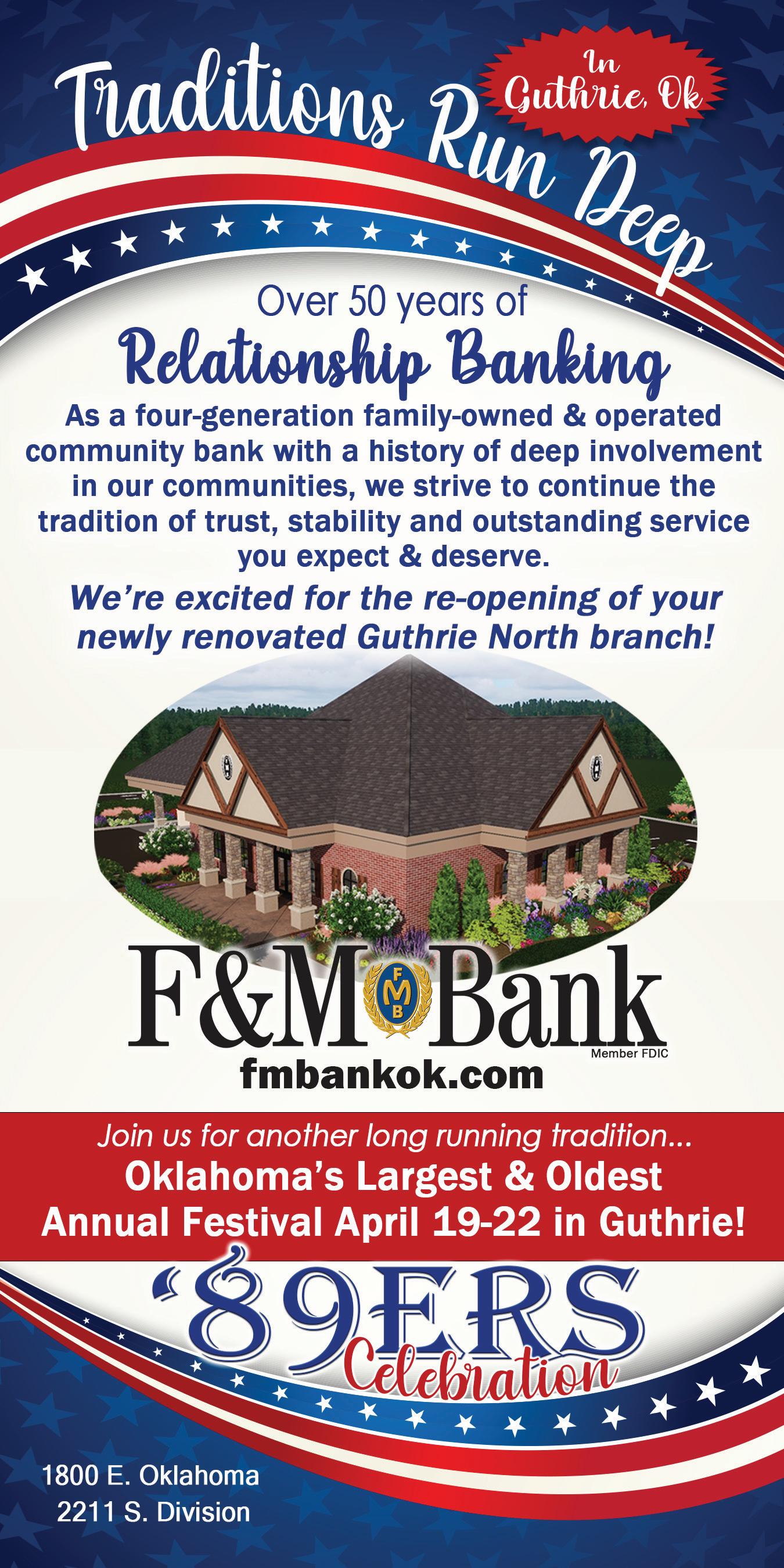
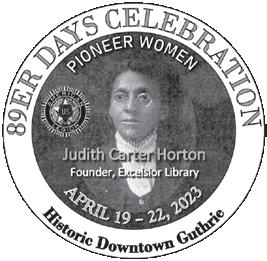














Conna Dewart
Special to Guthrie News Leader
The upcoming ‘89er Parade and Celebration (April 18 - 22) in Guthrie promises more exciting events as the ‘89er Committee finalizes plans for the traditional celebration of the birth of our state. The City of Guthrie is working hard with the American Legion to bring ‘89ers participants a bigger and better celebration each year.
On Thursday, April 20th, one of the funniest ‘89er events, the Great Bed Race, will begin at Honor Park near 300 West Harrison Avenue, across from the Oklahoma Publishing Museum. Teams of 5 will race homemade beds down Harrison Avenue from Honor Park. Each team has a theme, and the bed decorations and team costumes are always hilarious.
To kick off the race, the Guthrie High School Jazz Concert will begin at that location. At 5:30 p.m., the Guthrie High School Jazz Band and Jazz Choir will perform for all race
spectators. The bed race will begin at 6:00 p.m.
Bed race teams from all walks of life are welcome, from businesses to community groups to families. The registration fee is $25. Contact the Guthrie Chamber of Commerce to register and to get more information about race rules.
The Chamber is also in charge of the ‘89ers Jail again this year. Revelers are encouraged to wear their ‘89er Buttons to avoid being arrested, but there is no guarantee that the ‘89ers Cowboy Cops won’t pick you up for looking menacing. The jail will be in front of the Chamber of Commerce office on Parade Day (April 22nd).
In addition, the Fort Riley, Kansas, Cavalry Commanding General’s Mounted Color Guard’s Encampment Exhibition and Reenactment is returning this year, with four shows on Friday and Saturday, April 21st and April 22nd. The Color guard will be performing each day at 3:00 p.m. and
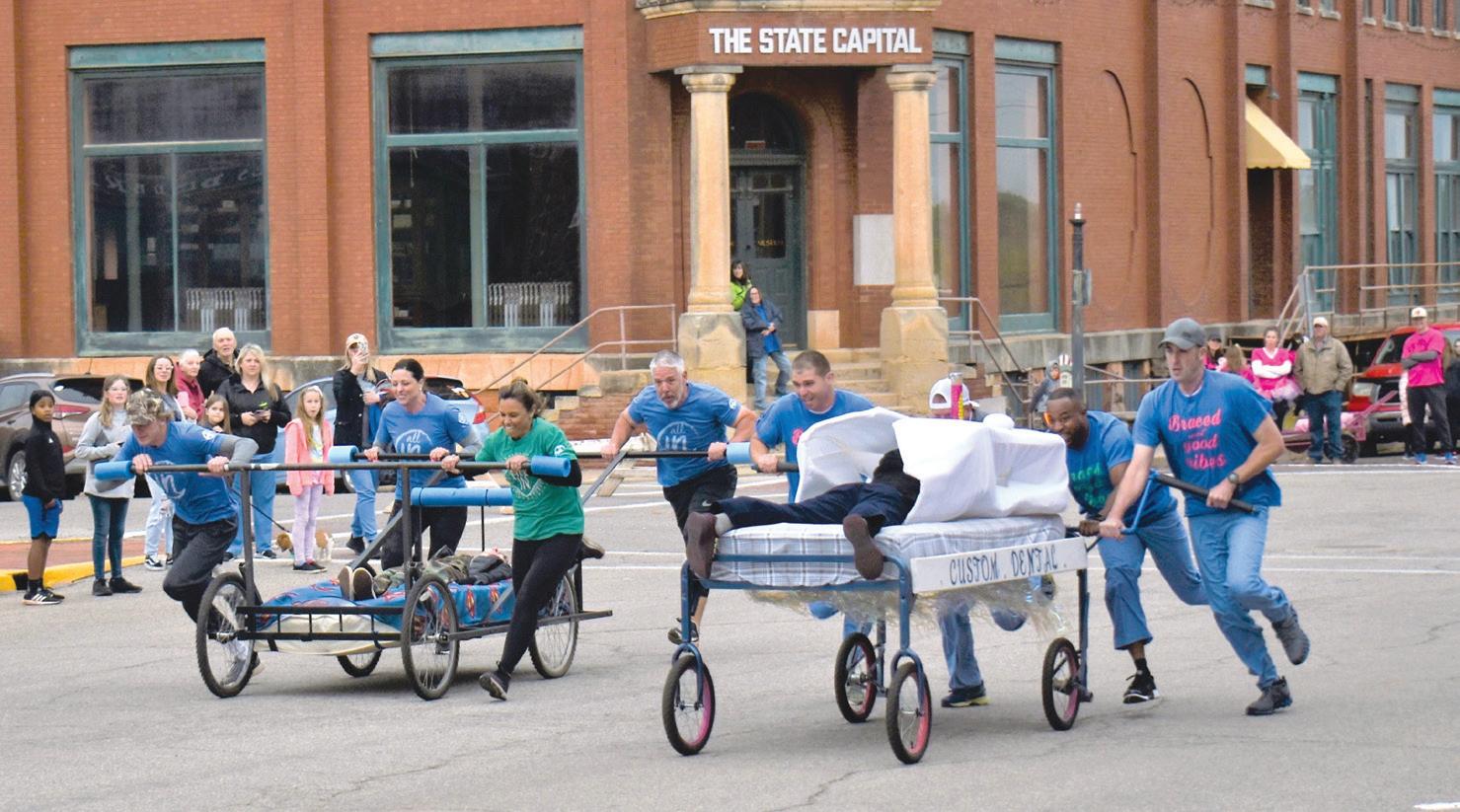
again at 6:00 p.m. just before the start of the WRCA Professional Rodeo at the Logan County Fairgrounds.
From privates to officers, the men and women of the Fort Riley Commanding General’s Color guard (CGMCG) recreate the colorful spectacle of the American Horse Soldier, portraying the U.S. Cavalry as they appeared in the mid-to-late 19th century. They demonstrate their horsemanship and perform mounted drill and weapons demonstrations.


CG are assigned to the Headquarters and Headquarters Battalion, 1st Infantry Division.
The CGMCG represents Fort Riley and the U.S. Army in a highly professional and polished display of cavalry horsemanship and military tradition. The honor that it is to have them here in Guthrie as part of our ‘89er Celebration again cannot be overstated. The ‘89er Committee and the American Legion Lebron Post 58 encourage locals and visitors alike to show them appreciation for their time and their service.
Soldiers in the CGM-
The mounted demonstration is an exhibition of skill and precision required of a cavalry horse soldier. It includes various drills using the 1861 Cavalry Light Saber, .45-caliber revolver and the 1873 Remington .45-caliber lever action repeater rifle.

in Ford products plus other foreign and domestics.


“If you open a shop or bring in a peddler’s wagon, you’re going to have to pay for it.”
That was one of the first resolutions passed by the first Guthrie city council at its initial meeting on April 26, 1889.
A few days after that first meeting, which was held in the tent used as a city hall, the city council reported that revenue had to be provided for city government operations. “Occupation taxes” were imposed, ranging from $10 to $12 a year for a blacksmith shop or peanut vendor to $100 a day for a circus.
Lumber yards paid $20 a month in Guthrie Proper, where 22 businesses were in operation and 16 others in East Guthrie paid $10 a month.
Book agents were taxed $40 a year. If a merchant peddled his goods from a wagon, he paid a yearly tax of $200. Billiard parlors were assessed $40 for each table, while livery stables paid $40 and $1 additional for each rig. Lawyers paid only $20, but bankers and fire insurance agents were assessed $100 each.
All occupations were covered except for the ministers. Those merchants unable to produce a tax receipt were subject to arrest and payment of a fine.
Several lawyers who refused to pay threatened to appeal to the U.S. courts and were promptly barred from practice in justice, police, and appellate courts here.
During May, June and July of 1889, a study of tax ordinances put into effect at that time shows that methods adopted to secure prompt payment of taxes levied on city lots were as drastic as those used in handling occupation taxes.
Next was East Guthrie on June 1 when a tax was levied on every lot in the town site. Taxes ranged from 50 cents to $7.50 and parties found on the lots by the tax collector were given five days to pay. Where no occupant was found, a notice was posted demanding payment within five days under penalty of forfeiture of the lot to the first person appearing and paying the tax. There were still homesteaders waiting in the wings for a good lot. There was no period for redemption, and no waiving of penalties. An owner either paid promptly or lost his lot. When in October and November of 1889 special school taxes were levied to support the first public schools, provision was made for the sale of all lots upon which taxes were not paid within 30 days, the proceeds to go to the school fund.
Each of the then four cities of Guthrie had separate governments, with mayors, councilmen and school boards. The governments of East Guthrie, West Guthrie, Guthrie Proper and Capitol Hill were uniform in ordinances adopted, but there were various methods of enforcement.
In each city, the most serious misdemeanor was lot jumping and was punishable by fines ranging from $25
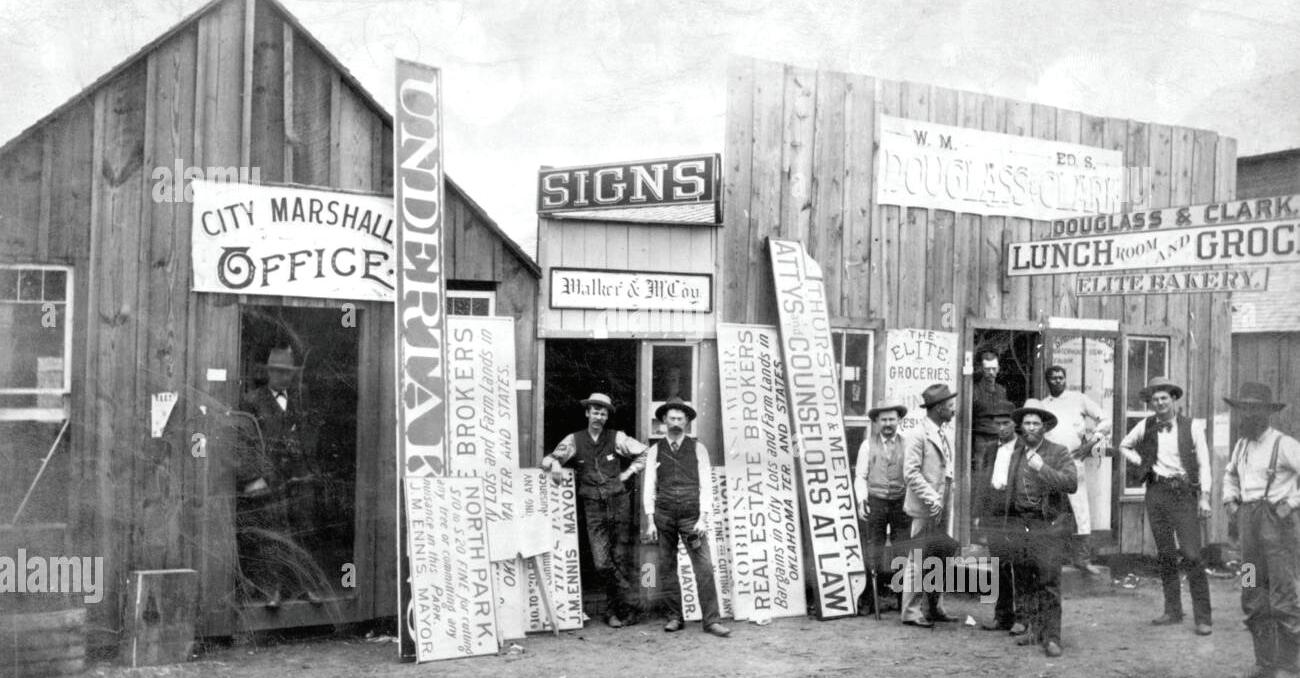
to $100 for each offense. The unlucky person who could not pay his fine promptly had to work out his penalty on the streets or other public works at $1 a day.
In East Guthrie, destroying or damaging a tree or shrub drew a $50 fine. The same offense in Guthrie Proper drew a fine from $5 to $10. In West Guthrie, it was overlooked entirely. It cost $20 to $25 to use foul language or talk loudly on the streets of East Guthrie and from $5 to $10 in Guthrie Proper.
Fines for gambling, prostitution and discharging firearms were $2 to $10 in all four cities.
Some of the ordinances passed and adopted went to great length to “protect public morality, decency and good order.”
Early ordinances prohibited intoxication, gambling, keeping gambling houses and devices, indecent exposure of person, impersonating opposite sex, keeping houses of ill-fame, and associating with prostitutes. When East Guthrie city fathers made a canvas of that area, they were dismayed at the number of houses of ill repute and quickly provided regulations for both the houses and their shady ladies.
An operator of a bawdyhouse was subject to a $50 fine and the inhabitants of such a dwelling were liable for a $20 penalty for each offense.
On the first day of the Run, settlers occupied 1,200 acres of the area where Guthrie now stands. This necessitated four different city councils and mayors to be elected. All four cities, Guthrie Proper, East Guthrie, West
Guthrie and Capitol Hill, extended north to the present location of College Street and south to the present city limits. Guthrie Proper included the territory between Division and Seventh Street west; East Guthrie extended east from Division to Walnut Street, Capitol Hill began at Walnut Street and extended to Pine Street, and West Guthrie ran from Seventh Street to 14th Street.
Each city council enacted its own set of laws and it became increasingly confusing for a citizen who tied his horse on the street in West Guthrie and find that when he journeyed across Division to east Guthrie he would be fined if he hitched his horse where it would graze on another man’s land.
One of the early acts of the Guthrie Proper council ordered that draymen and delivery wagons passing through the central city, which proudly controlled the Santa Fe Railroad, should pay a fee for every trip.
East Guthrie sought to solve this problem by its first executive act, that of sending the mayor as a delegate to St. Louis in an effort to entice the Frisco Railroad through East Guthrie.
In Guthrie Proper, it was a misdemeanor for a woman to appear on the street dressed in men’s clothing or “in any other unusual or sensational attire.” In West Guthrie if a woman dressed in her husband’s clothes and rode a horse to the West Side Market, it was not looked upon as improper.
After about a year of friction occasionally between the cities over the conflicting laws and ordinances, the joint
councils of Guthrie, East Guthrie, West Guthrie and Capitol Hill met to resolve their differences.
On June 20, 1890, an ordinance entitled, “An ordinance providing for the consolidation of the four cities” was introduced and adopted by unanimous vote. After several meetings of the “Consolidated Council,” a committee was named to contact Governor Steele and await his knowledge on the matter.
A few days later, the consolidated council met again and resolved that on July 29, 1890, the four cities would consolidate, but there was still some question as to
how records would be kept.
All records of the four cities were then turned over to the Clerk of Village Trustees on July 31, 1890. The clerk was immediately instructed to make a complete list of all business houses, professional people, commercial houses and non-commercial institutions in the Village of Guthrie. The settlement of Guthrie would never be forgotten by those who took part in the rush and excitement, but without a doubt, that hard-working village clerk wondered why all those 40 restaurants, 22 lumber yards and 39 doctors settled here.
Earnheart Oil & Propane has been providing superior service and peace of mind to our local community and the surrounding areas for more than 47 years.
We look forward to welcoming you to our family if you are searching for a reliable fuel and propane provider, and humbly thank our customers for your patronage.
Earnheart Oil & Propane has been providing superior service and peace of mind to our local community and the surrounding areas for more than 47 years. We look forward to welcoming you to our family if you are searching for a reliable fuel and propane provider, and humbly thank our customers for your patronage.












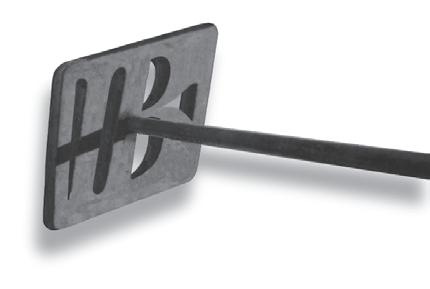
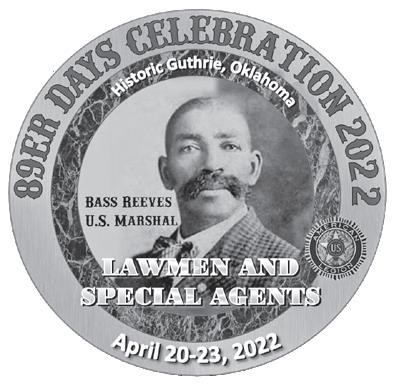








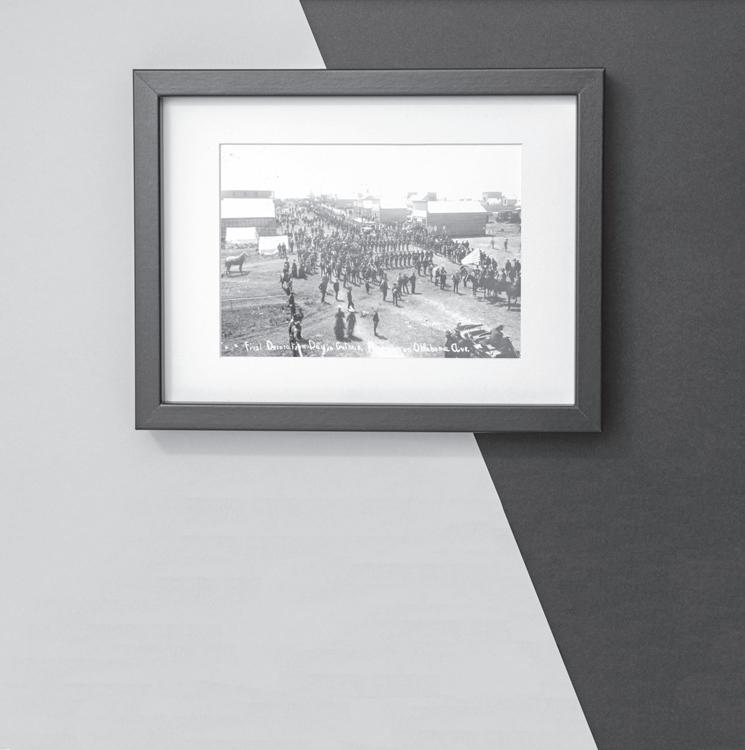
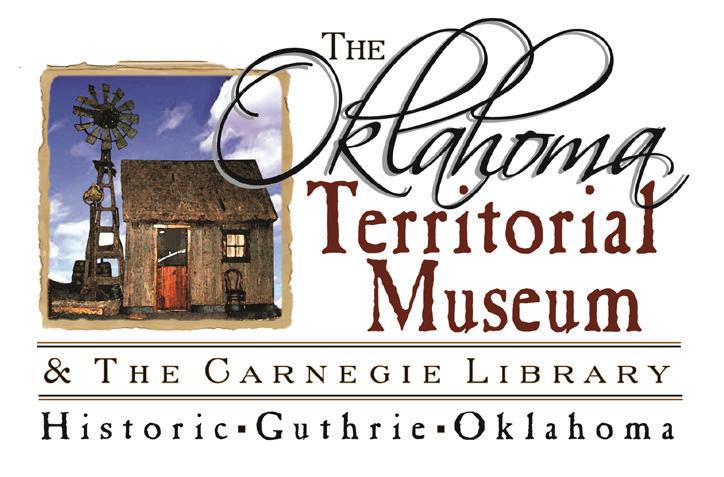










Job Corps is more than a training program. It’s an opportunity to change your life.
Whether you want a new career, to finish your diploma, or both, Job Corps can get you there. And the best part? It’s completely free.

Welding | Carpentry
Electrical, Pre-Apprentice*
Plumbing, Pre-Appretice*
Office Administration
Certified Nurse Assistant
Security and Protective Services
Culinary Arts

Job Corps offers career technical training in high-growth industries.
Students can earn a high school diploma or the equivalent, or college credits through Job Corps.
Job Corps is tuition-free to eligible young people and provides housing, meals, basic medical care, a living allowance, hands-on training and preparation for a career.
After students complete the program, Job Corps offers transitional support services, such as help finding employment, housing, and transportation.
Job Corps graduates either enter the workforce or an apprenticeship, go on to higher education, or join the military.
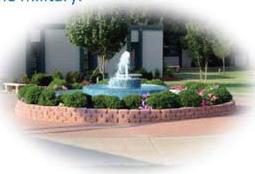
OTHER TRAINING PROVIDERS Rose State College | OSU OKC GUTHRIE JOB CORPS CENTER 3106 W. University Avenue | Guthrie, OK guthrie.jobcorps.gov
